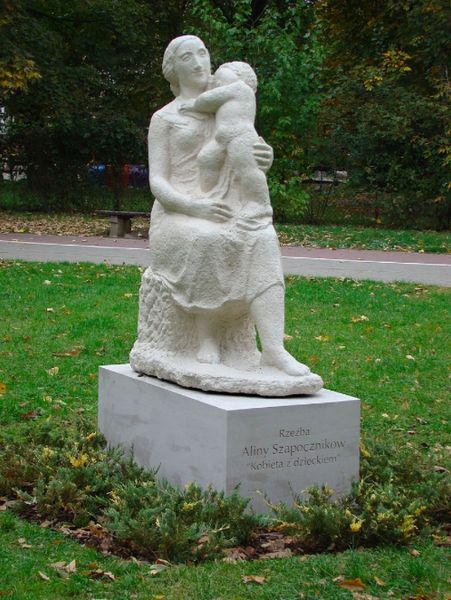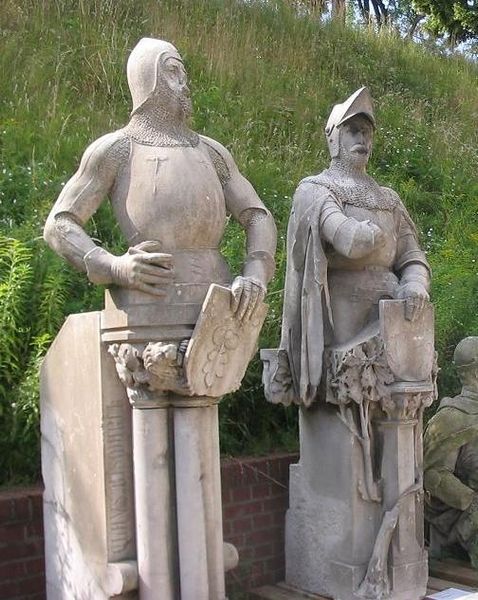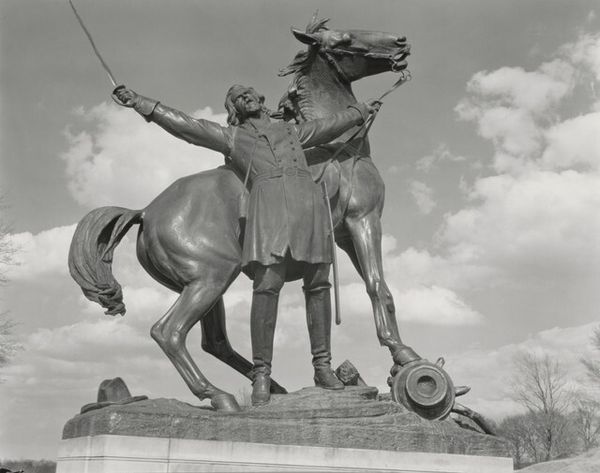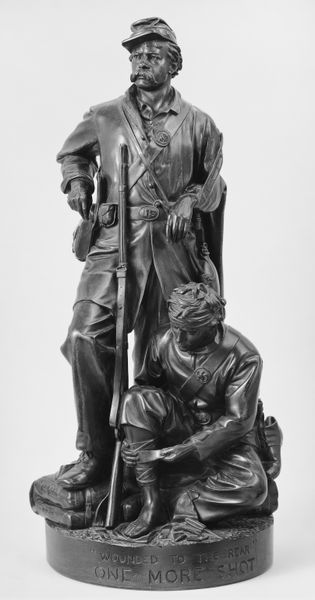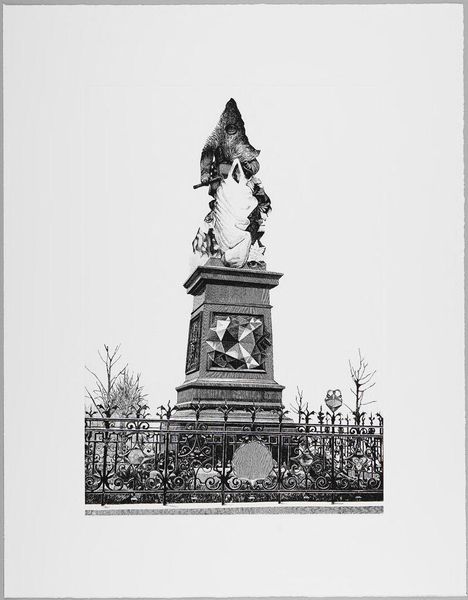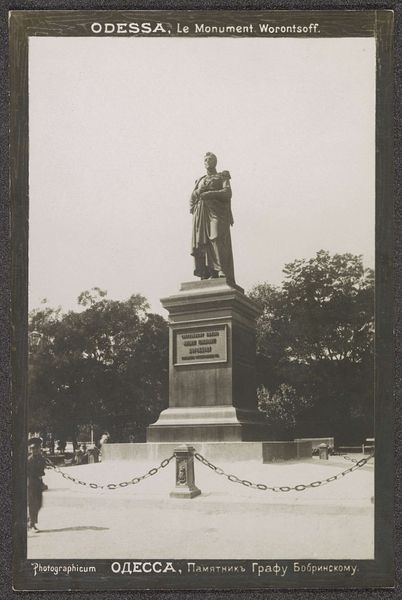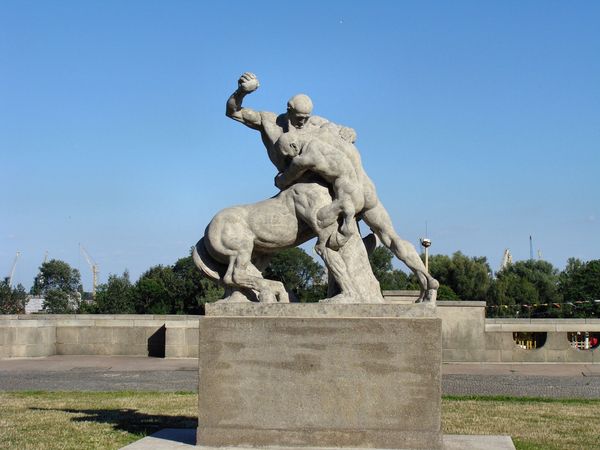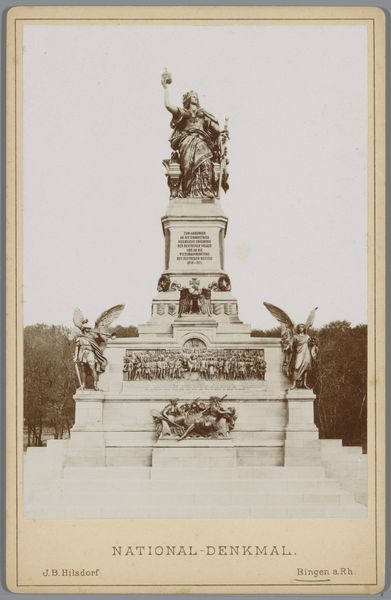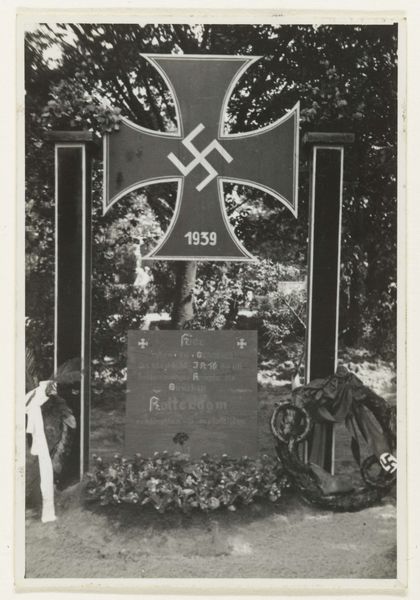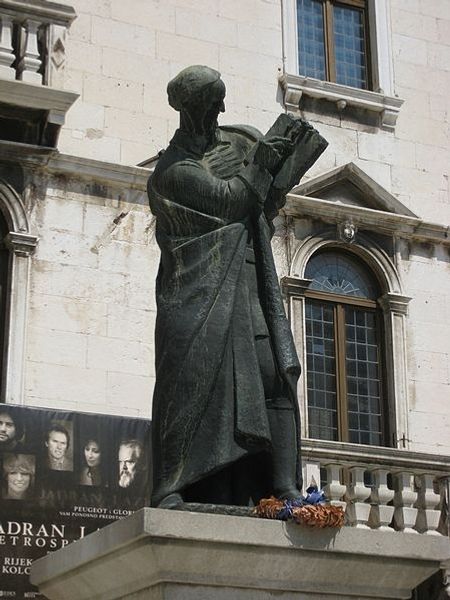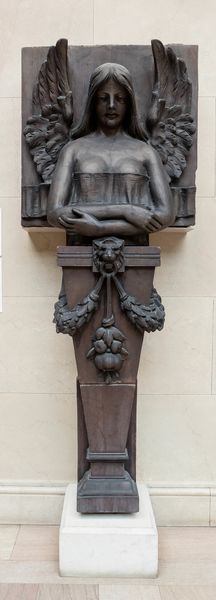
public-art, photography, sculpture
#
portrait
#
public art
#
street view
#
street art
#
appropriation
#
street-art
#
public-art
#
photography
#
graffiti-art
#
street graffiti
#
sculpture
#
street photography
#
history-painting
#
public art photography
Dimensions: image: 46.36 × 36.51 cm (18 1/4 × 14 3/8 in.) sheet: 50.8 × 40.64 cm (20 × 16 in.)
Copyright: National Gallery of Art: CC0 1.0
Curator: The photograph we’re looking at is “Matthew Fontaine Maury Monument, Richmond, Virginia,” captured in 2020 by Kris Graves. Editor: My first reaction is of a visual palimpsest. The bronze sculpture is covered in graffiti. I see layers of history and protest clashing right before my eyes. Curator: Indeed. Graves' lens captures a contested narrative. Maury, seated in bronze, gazes serenely, but the monument’s base is splattered with the raw material of dissent. The graffiti overwhelms the bronze's stoicism. Editor: It makes me think about how public sculptures operate. Bronze, a seemingly eternal material, is confronted by ephemeral spray paint, a readily available consumer product. The means of artistic production—high versus low, sanctioned versus unsanctioned—become central. Curator: Absolutely. This visual clash highlights a shift in cultural memory. The symbolism—Maury, the oceanographer, atop a monument meant to evoke knowledge and progress—is re-evaluated in light of his Confederate past. The globe looming above seems heavy with irony. Editor: And the choice of the photographic medium is crucial here. Graves documents the public's engagement with the monument, the materials of protest interacting with the stone. This wasn’t just a bronze and marble artifact; it was a site of dialogue and contention. It looks like public art responding to public action in real time. Curator: I agree. The visual assault challenges what these statues represent and asks the viewer to engage with the historical realities embedded, and sometimes conveniently obscured, within them. It really gets one to rethink how monuments participate in shaping cultural consciousness. Editor: Thinking about monuments as a place where material history meets public resistance…it reshapes how we read civic space and sanctioned sculpture in our cities.
Comments
No comments
Be the first to comment and join the conversation on the ultimate creative platform.
